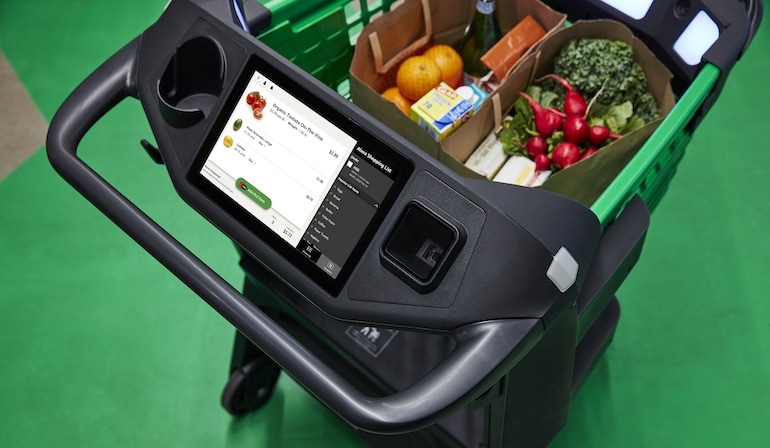Systems based on autonomous marketing are gradually more often connected with Deep Data analysis, Artificial Intelligence and Machine Learning to provide your consumers with perfectly tailored and hyper-personalised content and communications to simplify their interaction with you.
At the very beginning of the technology’s development, systems based on autonomous marketing enabled monitoring visits on websites in real-time and delivering marketing information about the current behaviour of all the users on your site. Thanks to a variety of solutions you can constantly react to prospects’ needs and adjust the products you want them to see.
Hyper-personalisation an intrinsic element
Real-time content personalisation has been replaced by hyper-personalisation, provided by wholly autonomous marketing resulting in the possibility to individually adjust the content to each of the customers’ preferences and needs and to deliver it in all the channels. But it’s just the tip of the iceberg. Using such technology you can replace the conventional static communication strategies applied in isolated channels with modern marketing campaigns.
Distinctions between hyer-personalisation vendors is signicant, see a list here.
Thanks to many different solutions marketing campaigns are becoming more dynamic and they start a real relatinship between a company and it’s customers. With hyper-personalisation, you can utilise autonomous solutions, which will become standard operating procedure, in all points where the customer interacts with the marketing company.
Not only can the products uniquely selected to show each consumer be adjusted and tailored based on their interests, but it is not about loyalty but relevancy that attracts them. Moreover, since the advent of AI machine learning, you’ll increase the conversion rate because it handles all the necessary marketing actions.
Customer Lifecycle Analytics
Autonomous marketing systems provide the user with convenient communication ways within all the stages of the customer lifecycle. Managing the whole lifecycle is key for optimising the monetisation of each of the acquired consumers. Marketing customer lifecycle starts with their acquisition, lasts during the contact’s education which prepares them for a purchase, the retention and increases their loyalty. It also supports their cognitive disonance, reassures after purchase, and massively reduced returned goods.
Autonomous marketing measures the engagement on all the stages and provides them with fitting marketing content. The autonomy enables you to monitor the behaviour of a customer at different stages in a lifecycle but also to analyse the engagement level and to educate them with Lead Nurturing campaigns – adjusted to each of the lifecycle stages the customer is on.

Engagement or passivity?
In marketing automation processes, customer engagement is measured with an engagement index. The marketing engagement index consists of several basic parts. The whole consists of two halves. The first one is responsible for the level of marketing commitment of the customer before signing the contract, making transactions etc.
The second one defines their marketing commitment at the stage of customer retention or exit phase. Automation systems place the customer on one of the halves, measure their marketing involvement considered as activity in several areas like the product selection content of their emails or subsequent behaviour, and then assign alternate products based on their reaction. We already know that your consumer is a committed shopper.
AI machine learning hyper-personalisation email marketing enables the retailer to introduce send-time optimisation, something which doesn’t suffer from having to wait for customers to visit your site. Now you are able to calculate when each consumer is most likely to appreciate getting their product seletion based on their most immediate need, and send it via email.
You already know everything about your customers – discover what they don’t know about themselves.
Inbound and outbound marketing activities greatly benefit from the additional information gained in the process. The knowledge of which products or categories are currently sought after the most, as well as which communication channels result in the highest conversion rates, allows you to focus on efficient solutions and optimise marketing expenditures.
What is more, knowing exactly when and how customers act, helps to choose the perfect time to switch product emphasis which strengthens relationships between you and the customer. This entire process is what is called “Predicting Customer Journey & Behaviour Mechanisms”.
Just why all this? Since we have already had the opportunity to match offers to the consumer’s needs? Well, AI gives us opportunities not only to match offers depending on customer’s preferences but also to predict what customers will probably be interested in before they even think about it hence: Get real results and grow your sales by adjusting your marketing to what consumers want to see.
Predictive personalisation solutions, like SwiftERM, use AI and Deep Data, we achieve the maximum customer lifetime value in each case, maximising the probability of purchase and minimising the overall costs. Also, we optimise the use of resources dedicated to marketing activities through detailed analysis of products and product categories that attract the most attention and interest. Knowledge of each consumer’s preferences and the ability to predict what products will be sold when, is all enabled by use of first-party data and complex analysis without need of any human involvement.





